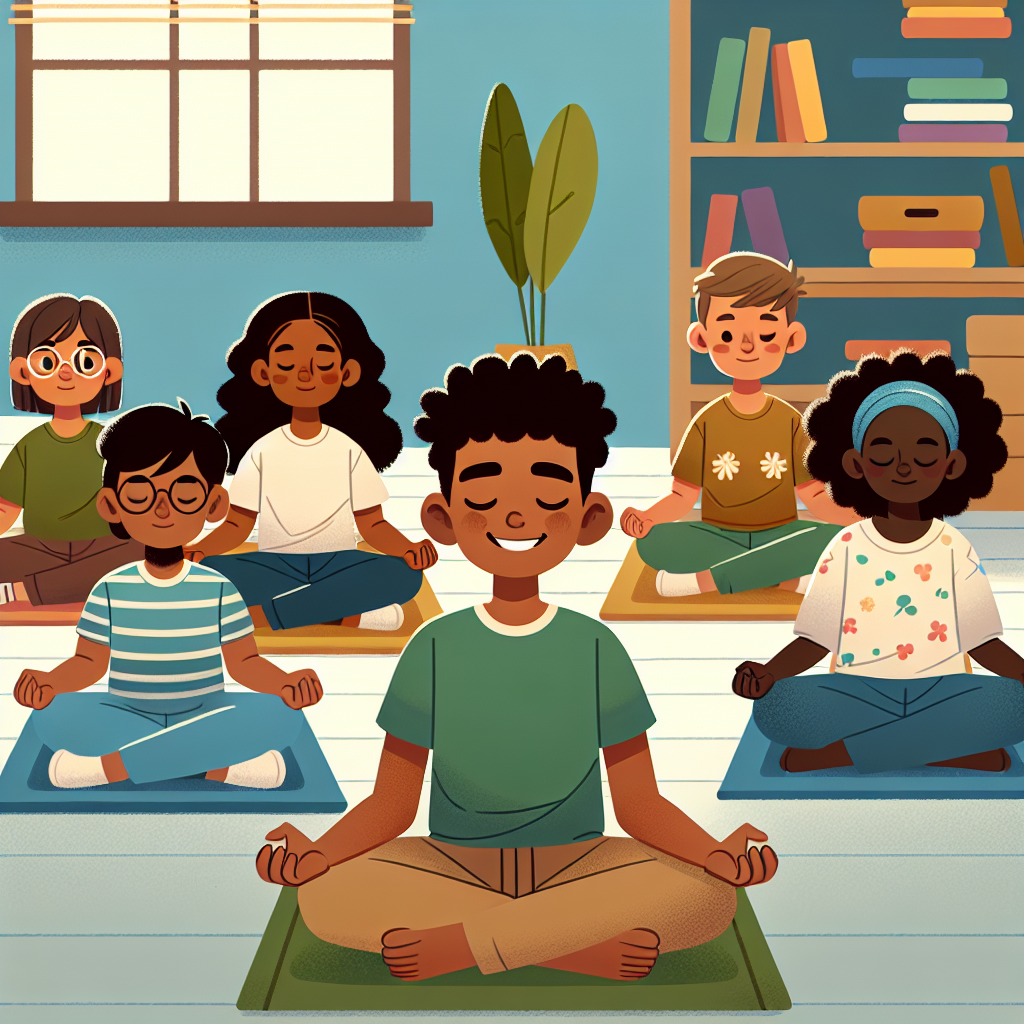The Benefits of Teaching Kids meditation: A Guide for Parents and Educators
In today’s fast-paced world, children are facing increasing levels of stress and anxiety. From school pressures to social media overload, kids are constantly bombarded with stimuli that can impact their mental health and well-being. In recent years, there has been a growing recognition of the benefits of teaching kids meditation as a tool to help them navigate the challenges they face.
Meditation is a practice that has been used for centuries as a way to calm the mind and cultivate inner peace. It involves focusing the mind on a particular object, thought, or activity, and can be done through various techniques such as mindful breathing, mantra repetition, or visualization. While meditation has traditionally been associated with adults, research has shown that children can also benefit greatly from learning this practice.
Benefits of Teaching Kids Meditation
1. Stress Reduction: One of the most significant benefits of teaching kids meditation is its ability to reduce stress and anxiety. By teaching children how to focus their minds and be present in the moment, meditation can help them develop coping strategies for dealing with stressful situations. Studies have shown that regular meditation practice can lower cortisol levels, the hormone that is released in response to stress, and help children feel calmer and more at ease.
2. Improved Focus and Concentration: In today’s digital age, children are constantly bombarded with distractions that can make it difficult for them to focus and concentrate. Meditation can help kids develop the ability to pay attention to one thing at a time and improve their cognitive skills. By teaching children how to quiet their minds and stay present, meditation can improve their ability to focus on tasks and schoolwork.
3. Emotional Regulation: Children often struggle with managing their emotions and may act out impulsively when they are upset or frustrated. Meditation can help kids learn how to regulate their emotions by teaching them to observe their feelings without judgment and respond in a more mindful way. By practicing meditation regularly, children can develop emotional resilience and a greater sense of self-awareness.
4. Better Sleep: Many children struggle with sleep disturbances due to stress, anxiety, or an overstimulated mind. Meditation can help kids relax and unwind before bedtime, making it easier for them to fall asleep and stay asleep throughout the night. By incorporating meditation into their bedtime routine, children can experience improved sleep quality and wake up feeling refreshed and energized.
5. Increased Self-esteem: Teaching kids meditation can also help boost their self-esteem and confidence. By practicing mindfulness and self-compassion, children can develop a greater sense of self-worth and learn to appreciate themselves for who they are. Meditation can help kids cultivate a positive self-image and overcome negative self-talk, leading to a more positive outlook on life.
How to Teach Kids Meditation
When introducing meditation to children, it is important to keep the practice fun and engaging. Here are some tips for parents and educators on how to teach kids meditation:
1. Start with short sessions: Children have shorter attention spans than adults, so start with short meditation sessions of 5-10 minutes to keep them engaged. As they become more comfortable with the practice, gradually increase the length of the sessions.
2. Use guided meditations: Children may find it easier to follow along with guided meditations that provide instructions and visualizations. There are many apps and websites that offer guided meditations specifically designed for kids.
3. Create a calm environment: Find a quiet, peaceful space where children can meditate without distractions. Encourage them to sit comfortably with their eyes closed and focus on their breath or a specific object.
4. Make it a daily practice: Consistency is key when teaching kids meditation. Encourage children to practice meditation daily, whether in the morning before school or in the evening before bedtime.
5. Be patient and supportive: Meditation is a skill that takes time to develop, so be patient with children as they learn the practice. Offer encouragement and support without putting pressure on them to achieve certain results.
FAQs
Q: At what age can children start meditating?
A: Children as young as 3 or 4 years old can start learning basic meditation techniques, such as deep breathing or visualization. However, the practice may need to be adapted to suit the child’s age and developmental stage.
Q: How can I get my child interested in meditation?
A: You can make meditation fun and engaging for children by using age-appropriate guided meditations, incorporating games or storytelling, or practicing mindfulness activities together as a family.
Q: Can meditation be used as a tool to discipline children?
A: While meditation can help children develop self-regulation skills and emotional awareness, it should not be used as a punishment or disciplinary tool. Encouraging children to practice meditation as a way to calm their minds and develop inner peace is a more effective approach.
Q: How can I support my child’s meditation practice at home?
A: Parents can support their child’s meditation practice by creating a peaceful environment for meditation, practicing together as a family, and encouraging consistency in daily practice. It is important to validate your child’s experience and offer positive reinforcement for their efforts.
In conclusion, teaching kids meditation can have numerous benefits for their mental, emotional, and physical well-being. By introducing children to this ancient practice, parents and educators can help them develop important life skills such as stress management, focus, emotional regulation, and self-esteem. With consistent practice and support, children can cultivate a sense of inner peace and resilience that will serve them well throughout their lives.




Leave A Comment